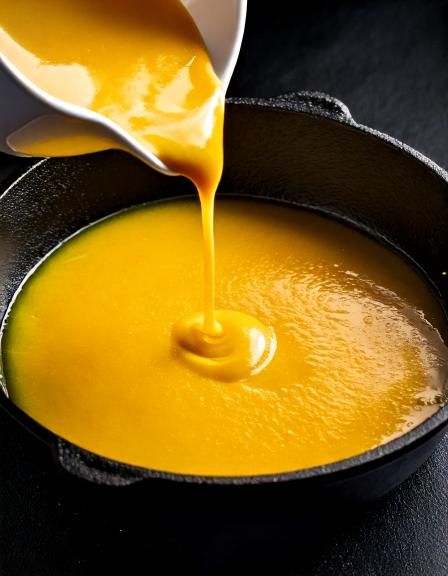While cast iron is great for baking, sticky desserts like caramel or toffee can be difficult to remove and may damage the seasoning. The sugar can adhere to the pan’s surface, making cleanup a challenge. It’s better to use a non-stick or silicone baking dish for these sweet treats.
Eggs: A Common Mistake
Cooking eggs in a cast iron pan can be tricky, especially if the pan is not well-seasoned. Eggs tend to stick to the surface, making them difficult to flip and clean up. If you must use cast iron for eggs, ensure the pan is thoroughly seasoned and preheated before adding the eggs.
Tomato-Based Sauces: A Tangy Problem
Tomato-based sauces are acidic and can break down the seasoning of a cast iron pan, leading to a metallic taste. The acidity can also cause the pan to discolor. It’s best to prepare these sauces in a stainless steel or enameled pan to avoid these issues.
Garlic: A Flavor That Lingers
Garlic has a strong flavor that can linger in a cast iron pan, affecting the taste of future dishes. While it’s fine to use garlic in moderation, cooking large quantities or allowing it to burn can cause the flavor to permeate the pan. Consider using a different pan if you’re cooking a dish with a lot of garlic.
Strong Aromatics: When Flavor Overpowers
Like garlic, other strong aromatics such as onions and peppers can leave a lasting flavor in a cast iron pan. This can be problematic if you plan to cook a variety of dishes with different flavor profiles. To prevent this, use a separate pan for dishes with strong aromatics.
High-Moisture Foods: A Soggy Mess
High-moisture foods, like steamed vegetables or poached dishes, can cause a cast iron pan to lose its seasoning. The moisture can also lead to rust if the pan is not dried thoroughly after cooking. It’s best to use a different type of cookware for these dishes.
Continued on next page 👇(page 3)👇
When my grandma saw me using a cast iron pan, she couldn’t believe I didn’t know you can’t cook everything in it! Here are 10 things to avoid
